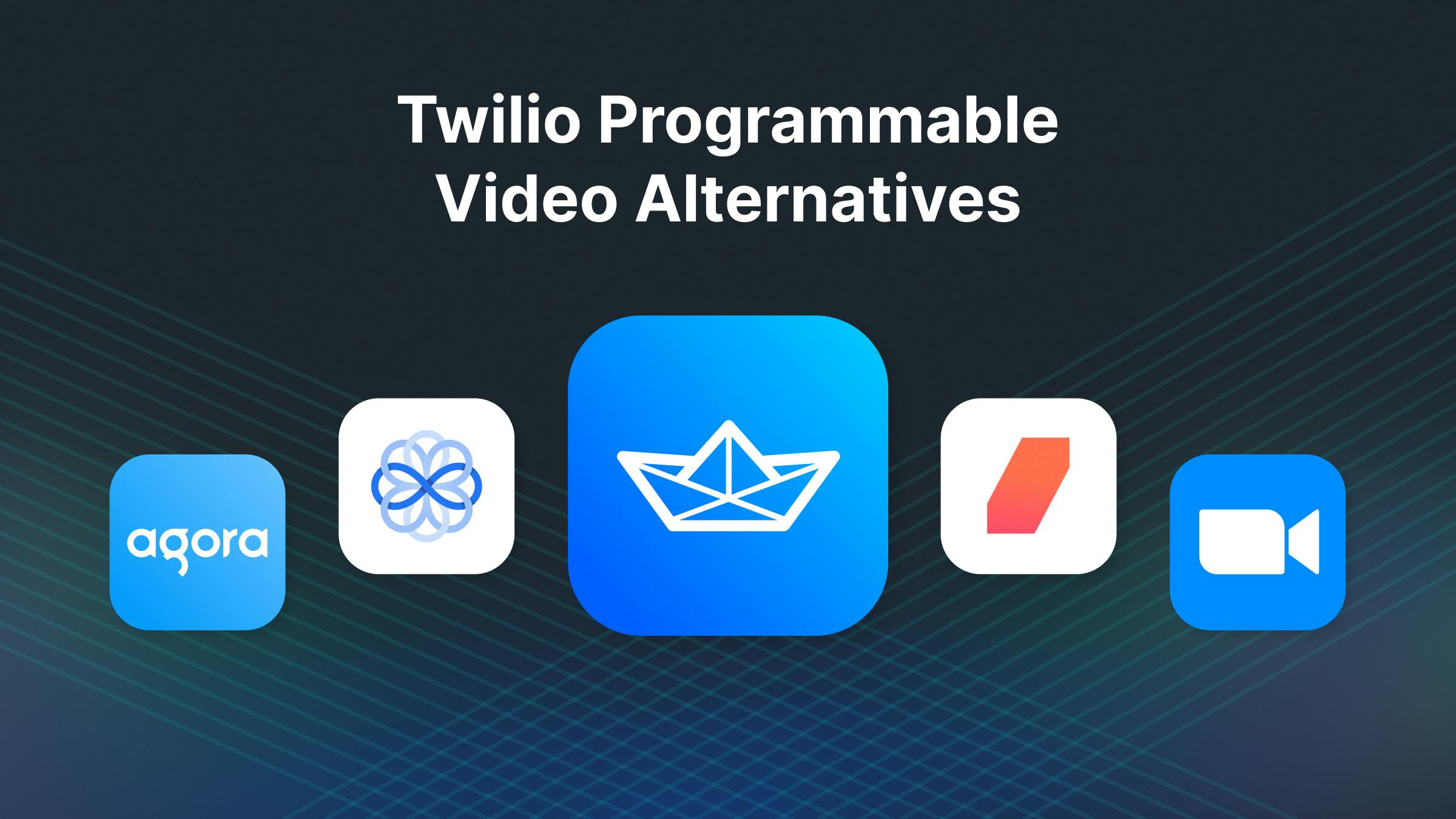Twilio Programmable Video is a WebRTC-based API for quickly adding real-time communication capabilities to your mobile and web applications. If you are currently using Twilio Programmable Video, you are likely aware of the company’s plan to sunset this product by the end of 2024. With the need to find a replacement for this in-app video solution as soon as possible, now is the time to research and compare Twilio Programmable Video alternatives.
With several video chat APIs available as alternatives to Twilio Programmable Video, it’s important to identify which features and benefits matter most for your app’s tech stack and user experience. In this comparison, we will look at the main competitors, their advantages and disadvantages, with the goal to centralize and standardize product information and support your decision-making process.
When choosing a replacement for Twilio Programmable Video, we recommend evaluating the following aspects of any competing solution:
- Look at your current video usage and find a solution that makes implementing that feature set easier. Replacing Twilio will require a significant amount of coding, so it is best to look for a platform with a developer experience that will help your team easily implement the feature set you need.
- Keep an eye on your current budget allocated to Twilio. One of the reasons Twilio was a popular platform for Video has been its pricing structure. There are some amazing platforms out there, but be aware of your budget. Some platforms charge a significant markup beyond the price point of Twilio.
- Define a clear plan on how and when you want to replace Twilio. A year to replace a significant portion of your product’s implementation might sound like plenty of time, but before you know it, 2024 will be over.
Comparing Twilio to Top Video Calling Alternatives
We will dive deep into comparing the following five Twilio alternatives. Although additional video solutions exist, we believe these five are the most comparable to Twilio when it comes to critical factors like feature availability, developer experience, pricing, and scalable infrastructure.
Let’s get started!
Twilio vs. Agora
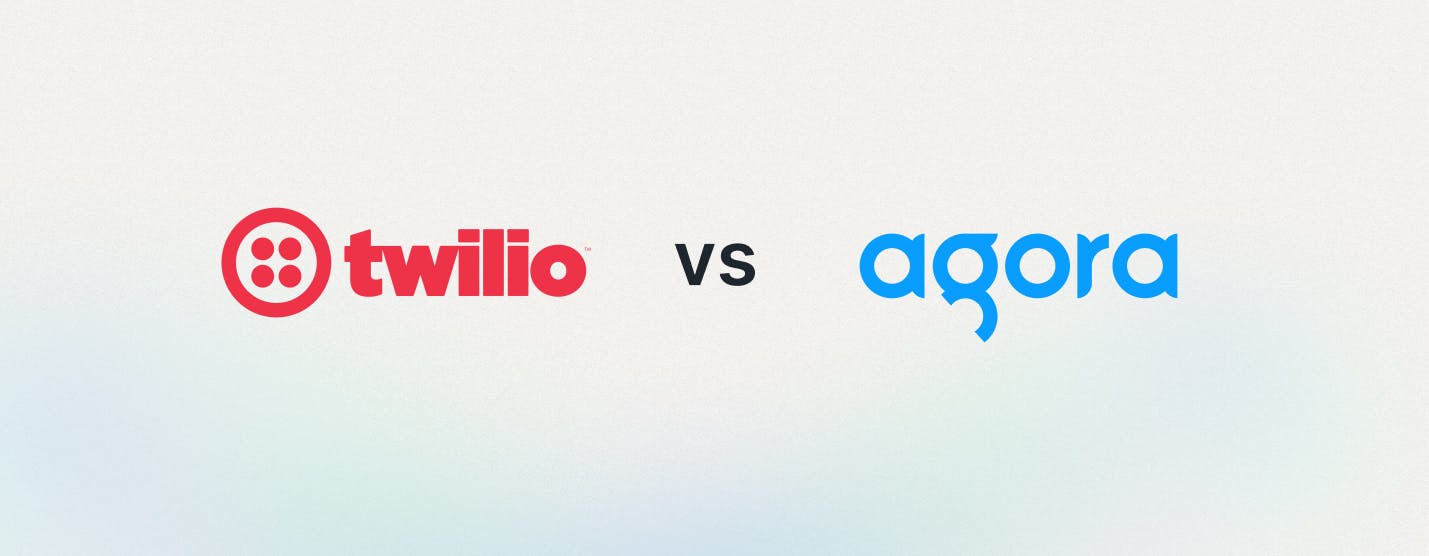
Agora’s Video SDK is available for Android, iOS, Windows, MacOS, React Native, React, Flutter, Electron, Unity, Unreal, and Cocos. Twilio offers SDKs for Native iOS, Android, and plain Javascript.
Agora offers several features on top of their SDKs, like screen sharing, whiteboarding, and security measures to protect user communications and data. It is flexible enough to allow interactive, customized applications with real-time communication.
Feature-wise, the two major advantages Agora has over Twilio are its rich extension system and UI Kit Quickstarts for iOS, Android, React Native, Flutter, and macOS. Agora has great support for AI noise suppression and video backgrounds. Note that the UI Kits offered by Agora often use older UI technologies.
When integrating Twilio, you have to handle a lot of the details of rendering and playing video and audio feeds yourself. The same applies to Agora, unless you use one of their UIKits.
Conceptually the biggest difference between Twilio and Agora is related to naming. Twilio deals with Rooms, while Agora talks about Channels. For both platforms you first connect their SDK to a Room/Channel and then you can initiate some form of playback of remote participants feeds and sending of your audio and/or video.
Agora offers a global infrastructure called SD-RTN. It is a global edge network. Agora claims it has very good latency and coverage worldwide.
Twilio vs. 100ms
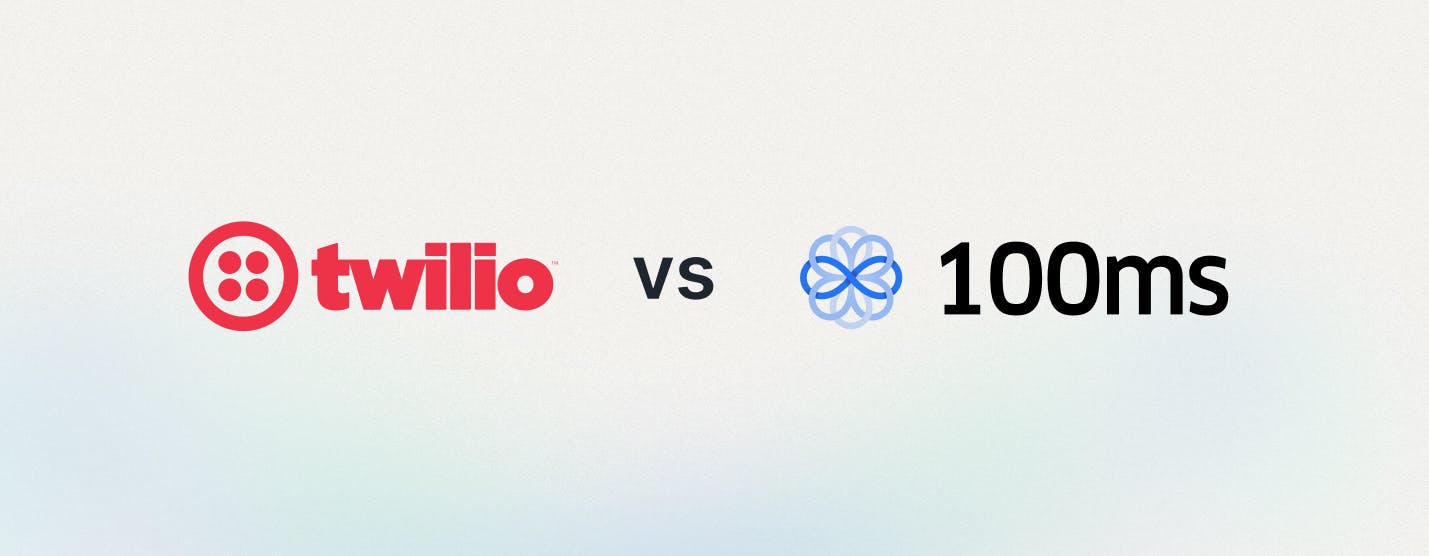
100ms offers a single SDK capable of both video calling and live streaming. This greatly simplifies the development of diverse features in a single product. You can create an audio or a video call with a couple of participants just as easily as an all-hands meeting with many participants.
On top of that, 100ms offers custom data support, giving you a lot of flexibility and customization options when integrating 100ms into your app.
100ms has SDKs available for Android, iOS, Flutter, ReactNative and React. Those SDKs also have a concept available called “Prebuilt,” 100ms’s low-code UI component solution. While useful, 100ms Prebuilt only allows a limited amount of theming. You can replace some artwork and define some colors of the entire Prebuilt experience. There is no way to adjust or add on top of the UI facilitated by Prebuilt.
At a base level, 100ms uses similar terminology to Twilio. When coding, you need to join a room, and once there, you need to display a track. A track is a single feed of video coming on from one of the participants in the call.
Twilio vs. Daily
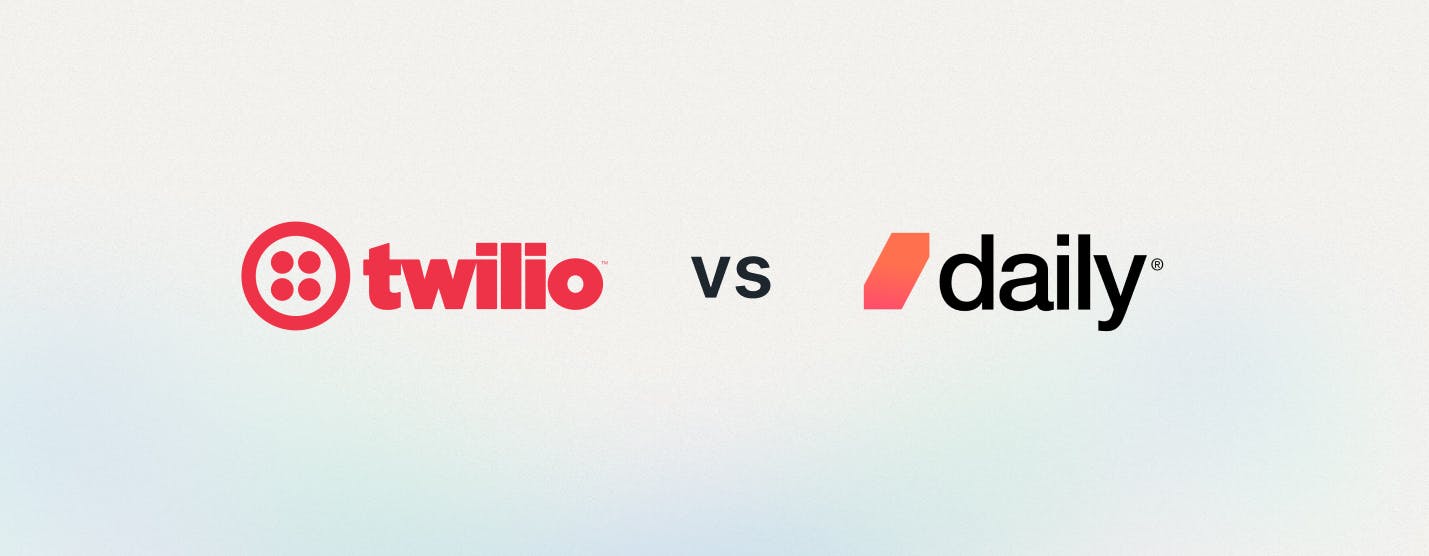
Next to the React based Daily Prebuilt components, there are client SDKs available for JS, iOS and Android. But these clients are mostly network level integration layers. Any display of call participants requires you to do pretty much everything on your own.
Daily has SDKs available for iOS, Android, React, and React Native. There is no direct support for SwiftUI or Compose.
The low level nature of Daily gives you a lot of flexibility, but it also requires you to do a lot of the implementation on your own.
Twilio vs. Zoom
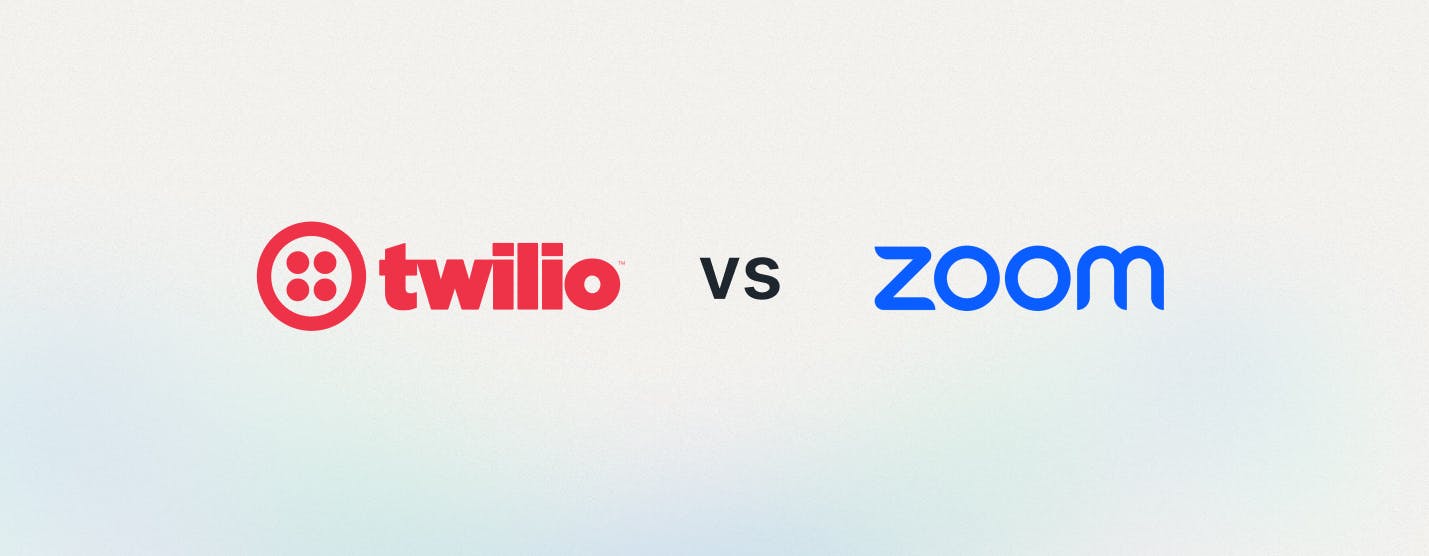
The main benefit of using Zoom is its ease of integration; drop it in, and you should be well on your way to having a basic video feature in your app. But that’s also where the journey ends with Zoom. There are few customization options available in their SDKs. Next, their video format is bespoke and directly tied to their platform.
Customizing the look and feel of the components Zoom offers will be challenging. The customizations offered by the Zoom SDKs are limited. The Zoom SDKs allow for a limited set of adjustable parameters on the UI classes they offer.
Zoom supports all major platforms you would want to deploy to. Android, iOS, Flutter, ReactNative, and Web are all supported.
Twilio vs. Stream
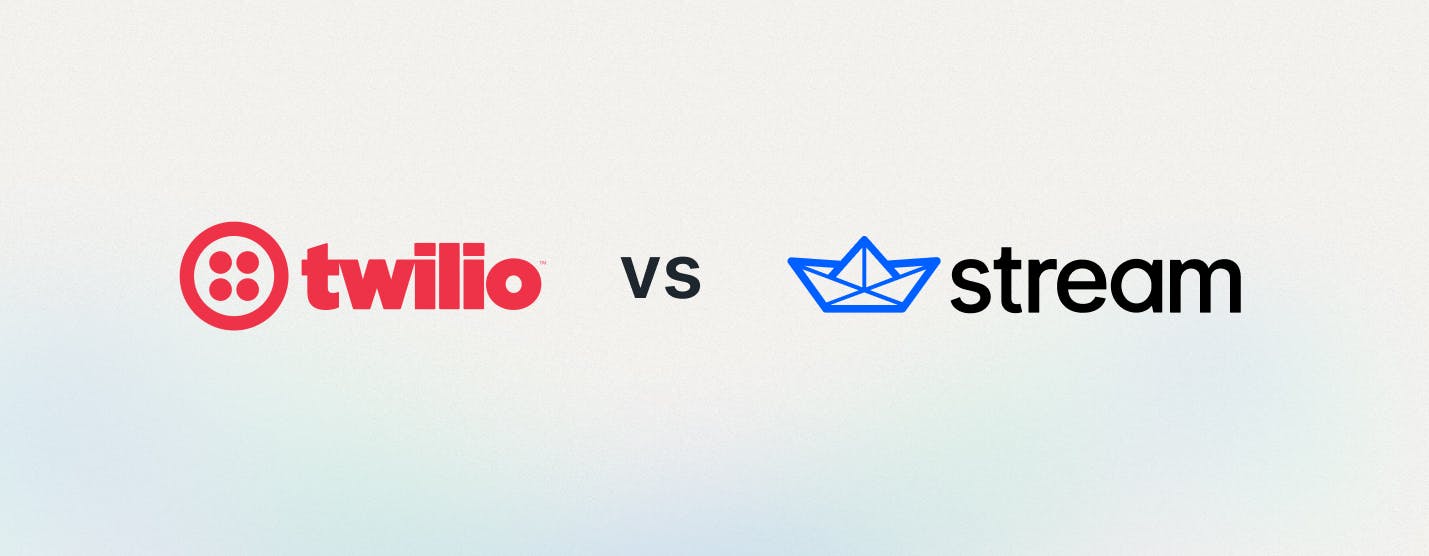
You can build in-app video calling, live streaming, and audio rooms in days with Stream, compared to the more challenging integration of Twilio for video calling. This is made possible by the UI Component libraries provided for the platforms React, React Native, iOS, Android, and Flutter.
The gap between the two solutions is significant in other areas as well:
- Stream's Video SDKs are up-to-date and support current development best practices. The SDKs made available by Twilio have received little to no maintenance in the past year, are outdated, and are verified and tested using outdated IDEs and target platform versions.
- Stream offers dynascale capabilities to control the resolution, video codec, fps, and bandwidth usage. This is especially useful when creating calls beyond 20 participants. Stream’s Global Edge Network and SFU architecture helps to ensure that regardless of where a participant is located, they will always benefit from the lowest possible latency and best resolution.
- The documentation of Stream is extensive and detailed. Many guides are available to support customizing and applying Stream’s SDKs to your use case.
- When a connection is lost, Stream will attempt automatic recovery of the connection.
- Stream has an intuitive dashboard experience that is much easier to use than Twilio’s.
Some other Stream advantages are unavailable in Twilio’s Programmable Video API.
- Stream offers a single SDK for multiple video and audio use cases like live streaming, audio rooms, and video calling. You’ve got the ultimate flexibility to mix and match the features you need.
- Stream’s Chat API integrates tightly with Stream Video, allowing you to add advanced chat capabilities, including reactions, threads, quoted replies, URL previews, editing, deleting, moderation, and typing indicators. Twilio only offers a lower-level client and no UI Components. Anything beyond basic connection to their platform is on your development team to implement.
- A backstage mode allows you to provide a convenient way to your end users to set up a call with co-hosts before opening the call up to a wider group of people.
- See a live stream preview before joining and enable views of participant counts and thumbnails.
- Permission system for granting audio, video, or screen share permissions live.
- Custom data on users, members, and calls for a flexible integration you can trust.
- Pricing is substantially lower for Stream compared to Twilio.
Stream offers SDKs with UI Component libraries for the platforms React, React Native, iOS, Android, and Flutter. There is a lower-level client available for plain JavaScript.
Which Video Provider Is Right for You?
At the end of the day, you will want to try building and testing with the solutions above to learn what you can achieve and how they meet your needs. We recommend starting by running through a getting started guide for each platform you are considering. Once you have made your initial assessment, select the top platforms that were convincing enough in your initial assessment. With the selected video platforms, try to implement a feature or use case specific to your product and evaluate the results.
Special Offer For Current Twilio Customers
We invite you to start coding with Stream Video & Audio completely free. The free Build plan does not require a credit card, and comes with a $200/month usage credit automatically applied. This gives you nearly 70,000 participant-minutes worth of HD calling per month so you can prototype and test risk-free. Visit the quick-start tutorial for your frontend SDK of choice and start testing today. If Stream turns out to be a viable option for you, contact us to learn about exclusive offers for current Twilio Video customers looking to migrate.

